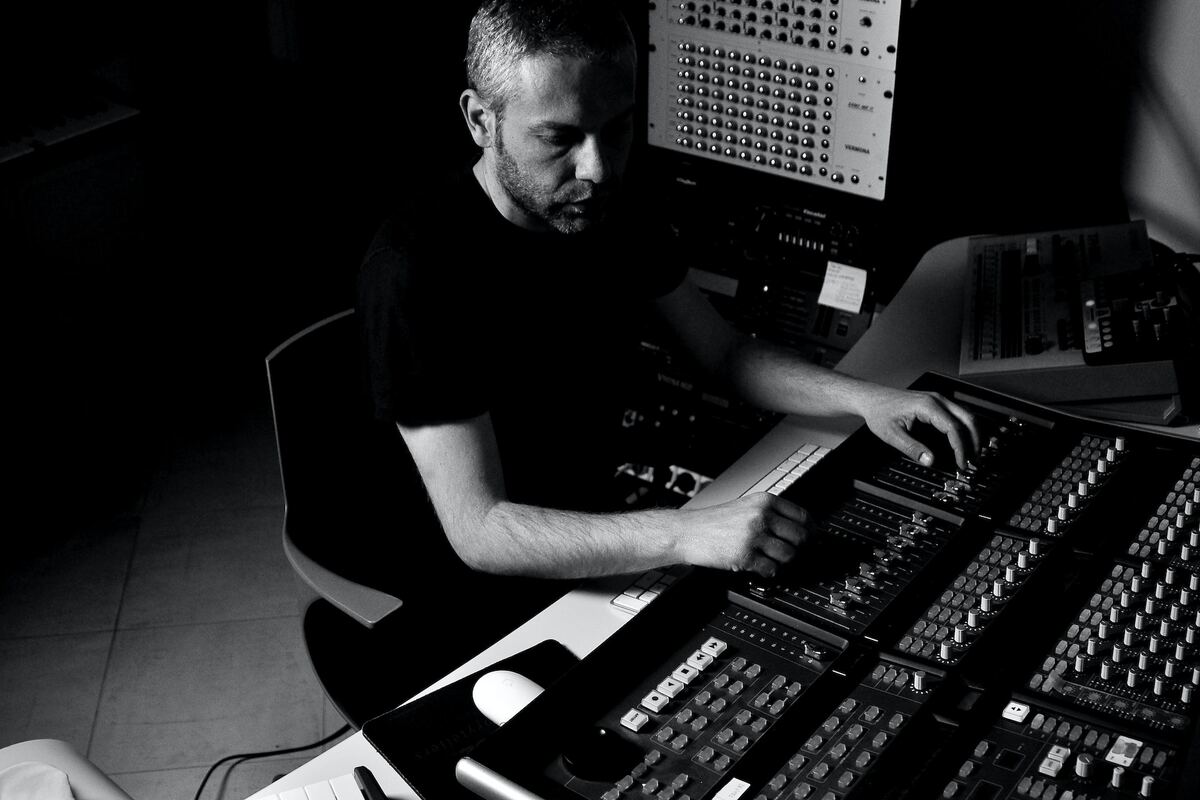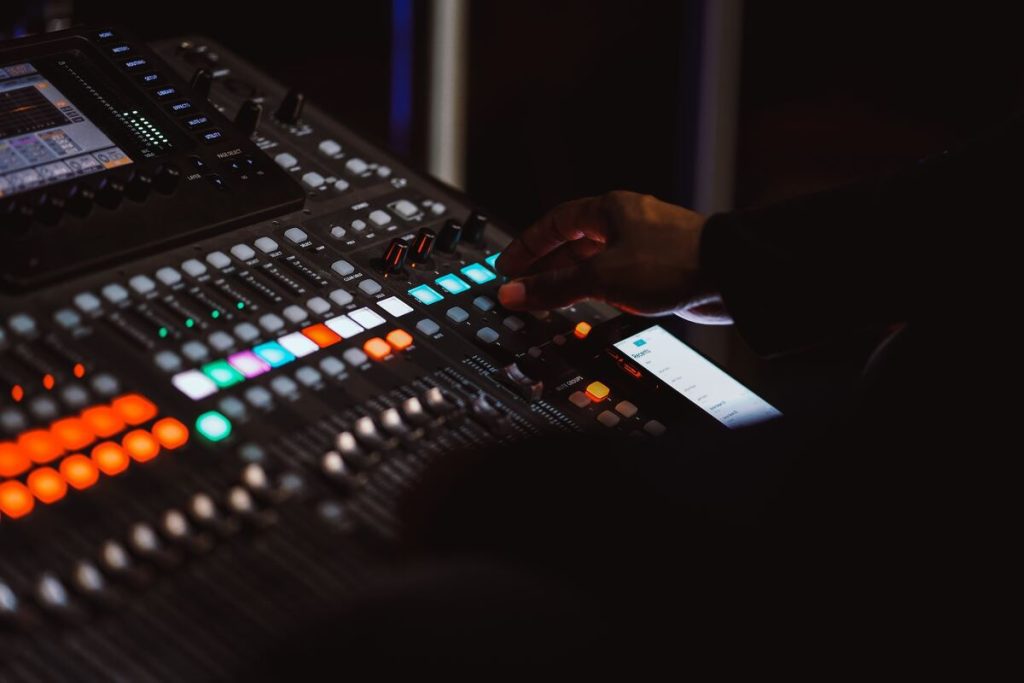Picture this: you’ve just created a fire beat, and you’re feelin’ like a boss. Your head is bobbin’, you’re vibin’, and you can’t wait to share your masterpiece with the world. But then you play your track on a different sound system, and suddenly, it’s like an amateur-hour explosion. What happened, bro?
Let me introduce you to the wild world of mixing. So, what’s mixing all about, and why does it matter? We’ll explore everything you need to know to give your tracks the swagger they deserve, transforming them into head-turning, speaker-thumping creations. Ready to dive into the mix? Let’s stir things up!
What is mixing in audio? Mixing in audio is the process of combining and adjusting individual audio tracks to create a balanced and cohesive final sound.
What is mixing in audio production?
Mixing in audio production is the process of blending and balancing individual audio tracks to create a cohesive and harmonious final audio mix. It involves adjusting the levels, panning, equalization, dynamics processing, and adding effects to each track to achieve clarity, depth, and a pleasing overall sound.

Mixing allows for the arrangement and placement of various elements, such as instruments, vocals, and effects, within the stereo field, ensuring that they work together seamlessly and enhance the emotional impact of the music.
For example, let’s say you’ve got a killer drum loop, a fat bassline, and some silky-smooth vocals. Without proper mixing, they might end up competing for attention, resulting in a cluttered, confusing sound. But with the right mixing techniques, you can make sure each element shines and sits perfectly in the mix.
AKAI Professional MPK Mini MK3

AKAI Professional MPK Mini MK3
My first time mixing music
Now, let me tell you a story from my early days as a music producer. I had just finished composing my very first track, and I was stoked. I thought it was an absolute banger and couldn’t wait to show it off to my friends. But when I played it for them, they couldn’t make out the individual elements – it was just a jumbled mess of noise.
I felt embarrassed, but luckily, a more experienced producer buddy of mine took me under his wing and introduced me to the world of mixing. He showed me how to balance levels, use EQ to create space, and apply effects to add depth. Once I applied these techniques, my track went from a chaotic cacophony to a well-balanced bop, and my friends couldn’t stop grooving to it! That, my friends, was the moment I realized the true power of mixing.
Why is mixing important for your tracks?
You might be wondering why mixing is such a big deal. Well, let me break it down for you: Mixing is all about making sure your track sounds amazing, no matter where it’s played. Whether it’s on a tiny phone speaker, in a car, or blasting through a massive club sound system, a well-mixed track will always sound tight and well-balanced.
Mixing can make or break your track!
A poorly mixed track can be a major buzzkill for your listeners. It can make it hard to hear individual elements, create an unbalanced sound, and even make your track sound amateurish. On the flip side, a well-mixed track can:
- Ensure that all the elements in your track have their own space in the mix
- Create a sense of depth and dimension, making your music sound more immersive
- Bring out the best in your track, highlighting its unique features and characteristics
Let’s take a real-world example. Imagine two producers, A and B, who’ve created similar tracks. Producer A puts in the effort to mix their track, giving each element its space, adding depth and character with effects, and fine-tuning the overall balance. Producer B, however, just throws everything together and doesn’t bother with mixing.
When the two tracks are played side-by-side, Producer A’s track will sound polished and professional, while Producer B’s track will sound cluttered and amateurish. The difference is clear: Mixing can make or break your track! So, to ensure your music reaches its full potential, it’s crucial to give mixing the attention it deserves.
How do you approach the mixing process?
Alright, so now that we know the importance of mixing, let’s talk about how to approach this magical process. There’s no one-size-fits-all method, but I’ve got some tried-and-true steps that can guide you on your journey to mixing greatness:
- Preparation: Before diving into mixing, make sure you’ve got a clean and organized project. Label your tracks, group similar elements, and remove any unwanted noises. Trust me, a tidy workspace makes for a smoother mixing process.
- Balance those levels: Start by adjusting the volume of each track so that nothing is too loud or too quiet. Use your ears and trust your instincts. You’ll know when it sounds just right!
- EQ like a boss: Carve out space for each element using EQ, ensuring they don’t clash with one another. Remember, you want your instruments and sounds to complement each other, not compete for attention.
- Add some flair with effects: Use effects like reverb, delay, and compression to give your mix depth, character, and professional touch. But don’t go overboard – sometimes, less is more!
- Reference your mix: Compare your mix to professional tracks in the same genre. This can help you identify areas that need improvement and give you a better understanding of how your mix should sound.
- Take breaks and listen with fresh ears: Mixing can be a marathon, not a sprint. Taking breaks and coming back to your mix with fresh ears can help you catch issues you might have missed.

What are the key elements in mixing?
Now that we’ve got a solid grasp of the mixing process, let’s dive into the essential elements you’ll need to focus on to make your tracks truly stand out. These are the main ingredients that’ll help you create a mix that’s balanced, dynamic, and downright irresistible:
- Volume: As we’ve already mentioned, achieving the right balance between all the elements in your mix is crucial. Pay close attention to the levels of your tracks, and make sure nothing is overpowering or getting lost in the mix.
- Panning: Panning allows you to position your sounds within the stereo field, creating a sense of space and width. By carefully placing your instruments and sounds, you can create a more immersive listening experience.
- EQ: Equalization helps you shape the tonal balance of your mix by boosting or cutting specific frequencies. This is key to ensuring that all elements have their own space in the mix and don’t clash with each other.
- Compression: Compression can help you control the dynamic range of your tracks, making your mix sound more polished and consistent. But be careful – over-compression can squash the life out of your mix!
- Reverb & Delay: Adding reverb and delay can give your mix a sense of depth and dimension, making it sound more engaging and professional. Just remember, moderation is key; too much can make your mix sound muddy.
- Automation: Automation allows you to make dynamic changes to your mix over time, like adjusting the volume of a specific track or changing the panning of an instrument. This can add movement and interest to your mix, keeping your listeners engaged.
If you want even more tips and insights, watch this video called “10 Things I Wish I Knew When I Started Mixing” from the Hardcore Music Studio YouTube channel.
Frequently asked questions (FAQ)
Do you still have questions about mixing? Below are some of the most commonly asked questions.
What is mixing used for?
Mixing is used to create a balanced and cohesive sound, ensure that all elements in your track have their own space in the mix, and add depth and dimension to your music. By focusing on volume, panning, EQ, compression, reverb, delay, and automation, you can achieve a professional-sounding mix that highlights the best features of your track.
How long does it take to become proficient at mixing?
Becoming proficient at mixing can take time and practice, as it involves developing your listening skills, understanding audio processing techniques, and cultivating your unique creative approach. Some people may see improvement in their mixing skills within a few months, while others may take years to reach a professional level. The key is to be patient, dedicated, and willing to learn from your mistakes.
Can I learn to mix using only stock plugins in my DAW?
Absolutely! While third-party plugins can offer unique features and sound characteristics, it’s entirely possible to create professional-sounding mixes using the stock plugins provided in your DAW. The key is to understand how to use these tools effectively and to focus on developing your skills as a mixer rather than relying solely on fancy plugins.
Conclusion
Well, folks, it’s time to wrap this mixtape up! Remember, mixing is like creating the perfect musical sandwich – you’ve got to layer those ingredients just right to make your listeners’ taste buds dance. So, don’t be afraid to get your hands dirty and dive into the mixing process.
And now, I’ve got a question for you: What part of mixing do you find the most challenging? And did I cover everything you wanted to know? Let me know in the comments section below. I read and reply to every comment. If you found this article helpful, share it with a friend, and check out my full blog for more tips and tricks on mixing. Thanks for reading and happy mixing!
Key takeaways
This article covered the ins and outs of mixing in music production. Here are some key takeaways:
- Mixing is the process of blending and adjusting individual tracks in a song to create a balanced, cohesive, and polished sound.
- The inverted pyramid framework helps you organize your content by starting with the most important information and moving to the less important details.
- Mixing matters because it ensures that your track sounds great on various playback systems and helps you stand out as a professional artist.
- A successful mixing process involves preparation, balancing levels, EQ, effects, referencing, and taking breaks.
- Key elements to focus on while mixing include volume, panning, EQ, compression, reverb, delay, and automation.
- Practice and patience are essential in becoming proficient at mixing, and it’s possible to create professional mixes using stock plugins in your DAW.















